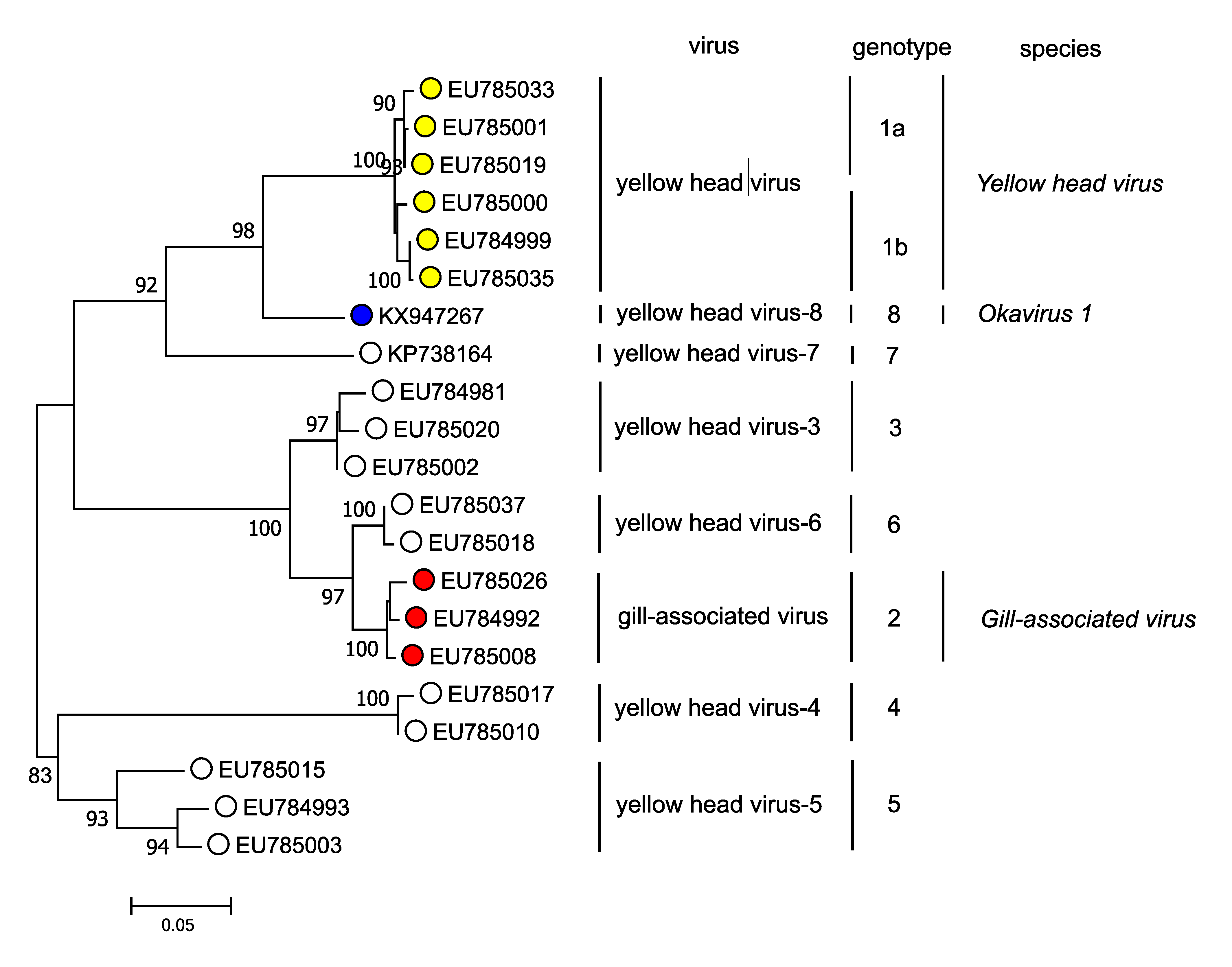Roniviridae on:
[Wikipedia]
[Google]
[Amazon]
''Okavirus'' is a genus of enveloped
 The genus contains one subgenus with three species:
*''
The genus contains one subgenus with three species:
*''
ICTV Report: ''Roniviridae''
{{Taxonbar, from=Q3775810, from2=Q7365724, from3=Q57751806, from4=Q57754796 Roniviridae Virus genera
positive-strand RNA viruses
Positive-strand RNA viruses (+ssRNA viruses) are a group of related viruses that have positive-sense, single-stranded genomes made of ribonucleic acid. The positive-sense genome can act as messenger RNA (mRNA) and can be directly translated in ...
which infect crustacean
Crustaceans (Crustacea, ) form a large, diverse arthropod taxon which includes such animals as decapods, seed shrimp, branchiopods, fish lice, krill, remipedes, isopods, barnacles, copepods, amphipods and mantis shrimp. The crustacean group can ...
s. Host organisms are mostly shrimp. It is the only genus in the family ''Roniviridae''. Viruses associated with the genus include: gill-associated virus (GAV) which causes reddening, biofouling with exoparasites, emaciation, and massive mortality; and yellow head virus
Yellowhead disease (YHD) is a viral infection of shrimp and prawn, in particular of the giant tiger prawn (''Penaeus monodon''), one of the two major species of farmed shrimp. The disease is caused by the ''Yellow head virus'' (YHV), a positiv ...
(YHV) which causes yellow head, arrest of feeding, and massive mortality. The name is derived from the 'Oka' or lymphoid organ in which the viruses are commonly detected and in which pathology occurs during acute infections. Lymphoid organs are anatomical structures common to penaeid shrimp
Penaeidae is a family of marine crustaceans in the suborder Dendrobranchiata, which are often referred to as penaeid shrimp or penaeid prawns. The Penaeidae contain many species of economic importance, such as the tiger prawn, whiteleg shrimp, ...
. There are three species in this genus.
Structure
Viruses in the genus ''Okavirus'' are enveloped, with bacilliform geometries, and helical symmetry. The diameter is around 20–30 nm.Genome
Genomes are linear and non-segmented, around 26 kb in length.Life cycle
Entry into the host cell is achieved by attachment to host receptors, which mediates endocytosis. Replication follows the positive stranded RNA virus replication model. Positive stranded RNA virus transcription is the method of transcription. Crustaceans and mostly prawns serve as the natural host. Transmission routes are ingestion.Taxonomy
 The genus contains one subgenus with three species:
*''
The genus contains one subgenus with three species:
*''Tipravirus
''Okavirus'' is a genus of enveloped positive-strand RNA viruses which infect crustaceans. Host organisms are mostly shrimp. It is the only genus in the family ''Roniviridae''. Viruses associated with the genus include: gill-associated virus (G ...
''
**''Gill-associated virus
''Okavirus'' is a genus of enveloped positive-strand RNA viruses which infect crustaceans. Host organisms are mostly shrimp. It is the only genus in the family ''Roniviridae''. Viruses associated with the genus include: gill-associated virus ( ...
''
**''Okavirus 1
''Okavirus'' is a genus of enveloped positive-strand RNA viruses which infect crustaceans. Host organisms are mostly shrimp. It is the only genus in the family ''Roniviridae''. Viruses associated with the genus include: gill-associated virus ( ...
''
**''Yellow head virus
Yellowhead disease (YHD) is a viral infection of shrimp and prawn, in particular of the giant tiger prawn (''Penaeus monodon''), one of the two major species of farmed shrimp. The disease is caused by the ''Yellow head virus'' (YHV), a positiv ...
''
References
External links
ICTV Report: ''Roniviridae''
{{Taxonbar, from=Q3775810, from2=Q7365724, from3=Q57751806, from4=Q57754796 Roniviridae Virus genera